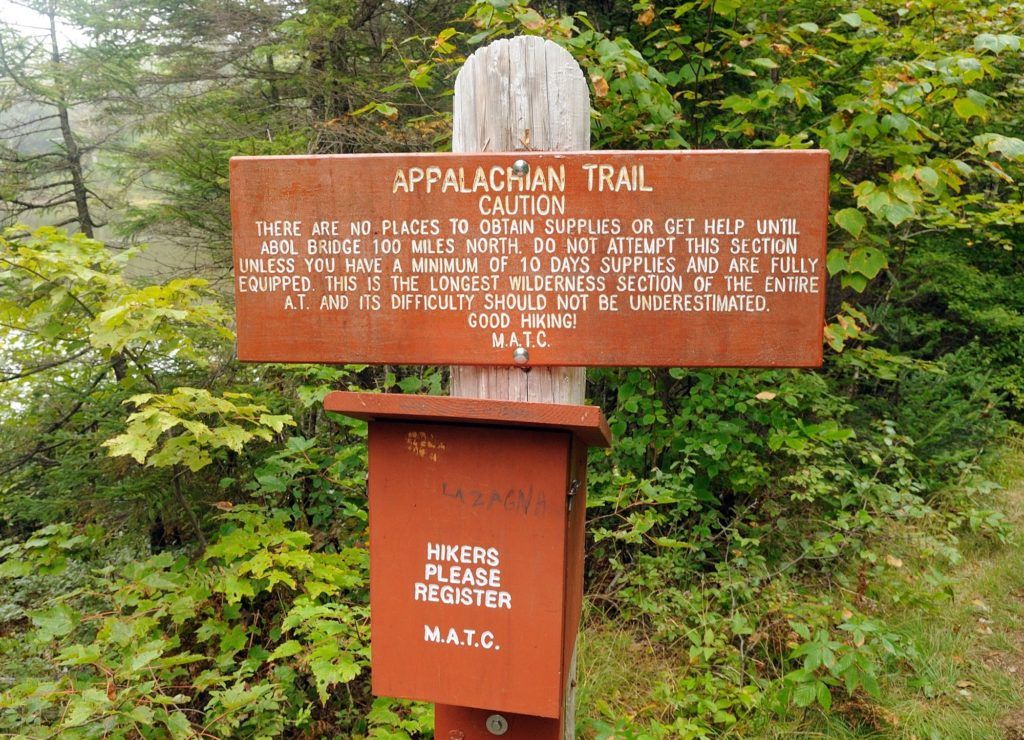by Brian Threlkeld
100 Mile Wild: A Winter Trek Through Maine’s 100 Mile Wilderness
February 22, 2018
On February 23, two friends and I will embark on an adventure in Maine that few have completed: a mid-winter trek through the 100 Mile Wilderness (100 MW) on the Appalachian Trail (A.T.). The 100 MW is the last section of the 2,190-mile long A.T. before hitting Baxter State Park and Katahdin, and is arguably the most remote and rugged stretch of the entire Trail.
We’re planning to travel the length of it in one push.

For those who aren’t familiar with the Trail through Maine’s rugged mountains and forests, telling people you’ve hiked the 100 MW garners some respect in this corner of the country, and it’s a bucket list item for a lot of outdoorsy folk. Telling people that you plan on snowshoeing and skiing it in the middle of the harsh Maine winter, however, leads some of these same people to question your sanity.
Without a doubt, this trip is going to be hard and maybe a little crazy. Completing it at all will depend heavily on the weather conditions — we don’t know what the snow levels will be like, how cold it will be or if the streams and lakes we plan to travel on in the second half of the trip will be frozen solid. Nonetheless, we’re preparing for success.
Why go?
Over the past 6 years, my thirst for challenging trips has been strengthened by the various adventures I have been lucky enough to be a part of. I like the snow blowing in my face. I like my lungs catching fire. I like my legs feeling like Jell-O. It makes me feel real, chisels away at the things many of us (mistakenly) tell ourselves are important and lets me know that I that I’m resilient and can persevere through hardship.
What we’re doing to prepare:
Training:
In addition to spending hours in the gym getting my legs and core strong, I’m just trying to get better at putting one foot in front of the other, with weight, for long periods of time. There’s a lot to be said about what’s between your ears when the going gets tough in the mountains (or just in life), but having the physical capacity for trips like this really stacks the deck in my favor.
Logistics:
When I was developing the idea to travel through the 100 MW in winter, I figured I should first check it out in person before the snow hit the ground. I took five days in October last year to hike the A.T. from Monson to Abol Bridge to research the challenges we might face, decide how best to stay safe and give us the best shot at pulling off this adventure. I used a GPS app to track my route each day, plotting waypoints for potential hazards (difficult water crossings, super steep terrain, tricky routes, etc.) and get a sense of the overall elevation change. While there are extensive online resources about the 100 MW, I’ve learned that first-hand knowledge is always more valuable than reading someone else’s blog or route notes.
Before my hike, our group had discussed possible strategies for the trip. We’d discussed doing the entire journey unsupported (i.e. not having any gear drops and carrying everything we’d need for 10-12 days). Yet after seeing the Trail conditions with my own eyes and envisioning what it would look like with several feet of snow on the ground, we decided that a supply drop around halfway through the trip made more sense. We also decided that using skis and sleds for the entire journey would be foolish in light of my experience climbing over a snowless Barren Mountain and along Fourth, Third and Chairback Mountain. Instead, we’ll start from Monson with packs on our backs and snowshoes strapped to our feet. We’ll then switch to skis and sleds with duffels at the halfway-point supply drop, as the second half of the trip has a dramatic reduction in overall elevation change. When coupled with the opportunity to skirt small elevation changes by staying on frozen streams and lakes, pulling sleds makes sense. I hope.
What we’re bringing
Lots of warm stuff!
20 degree down sleeping bags
Insulated pads/closed cell foam pads
(2) Two-person, four season tents
Snowshoes
75-85L backpacks
Wool base layers
Down booties (perfect for around camp)
Synthetic “puffy” pants
Big down jacket
Hard shell top and bottom (in case we get that dreaded word that rhymes with “Maine”)
Winter stove and fuel
Winter boots
Electronics (iPhone, headlamps, camera)
Solar charger
Food
Water purification
Satellite texty thing
Hats, gloves, big mittens, balaclavas, etc.
Second half of the trip:
All the above minus the boots, plus:
Pulks (designed ourselves based on trips through the Maine Woods over the years)
Skis and boots (some of us are opting for lightweight AT set-ups, while some are opting for a BC Nordic setup)
Duffel bags
How to follow along
 We will be sharing daily photos from our adventure on the ATC Instagram page, @AppalachianTrail, updating our progress throughout the trip. Be sure to stay connected to see how the team is doing, what challenges we’re facing, the crazy things we’re encountering and anything else we can’t predict!
We will be sharing daily photos from our adventure on the ATC Instagram page, @AppalachianTrail, updating our progress throughout the trip. Be sure to stay connected to see how the team is doing, what challenges we’re facing, the crazy things we’re encountering and anything else we can’t predict!
You can also check out #myATstory on my Instagram page, @threlkeldoutdoor, and visit us at www.threlkeldoutdoor.com to learn more about the gear, the sponsors and the crew.
We’ll see you on the Trail!
